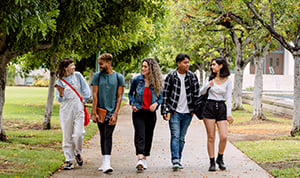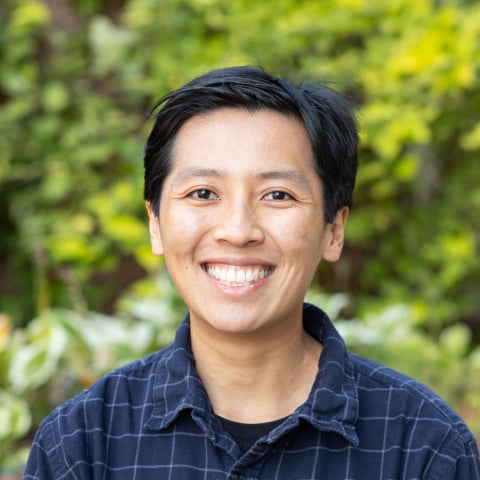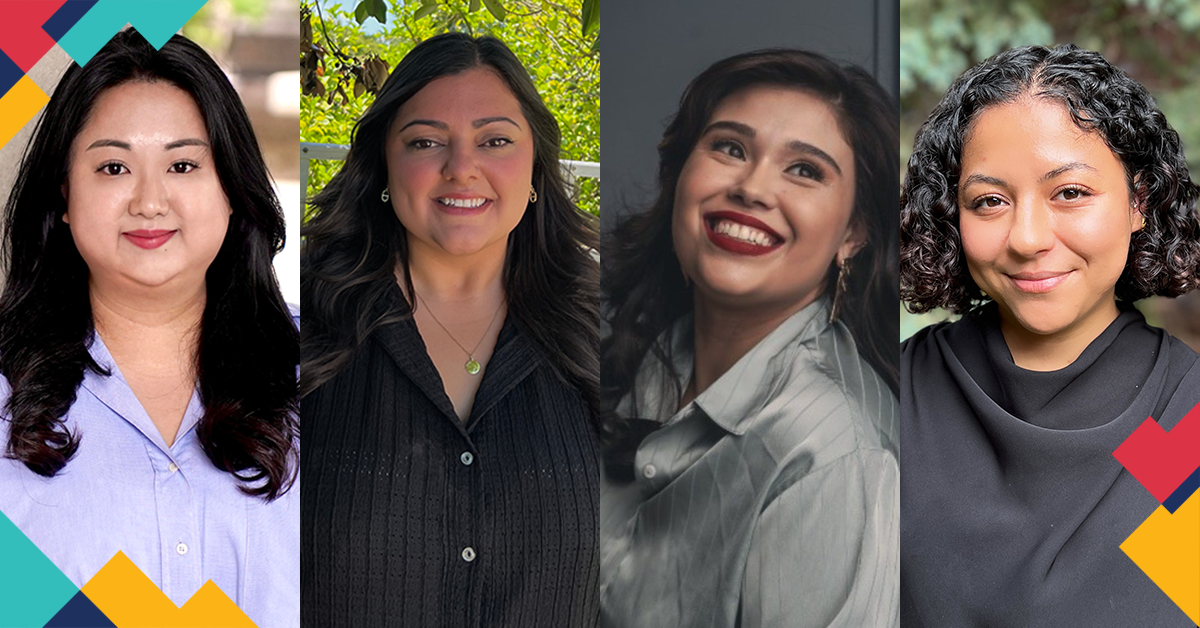Blog
Expanding the Vision for Peer Relationships
No youth issue is more present in the headlines today than peer relationships.
If you just disagreed with that bold assertion, here’s why: You probably didn’t hear it framed that way. Instead, the headlines you saw were likely about teen loneliness. Social isolation. How the pandemic kept students from interacting with their classmates. Racism and prejudice. Mass shootings by lone young men. The headlines talk about all those things, but just beneath the surface of all of those headlines are relationships, and more often than not, peer relationships.
These relationships with friends, classmates, romantic partners, teammates, and other peers can be a source of joy and growth at every stage of life. They also can be hard, messy, and complicated. Their absence can be destructive. And their presence can also be transformative.
From time to time, adults try to guide these relationships in positive directions through “peer programs,” such as bullying prevention or tobacco use prevention. Niche efforts are boosted by specific federal funding streams tied to flashpoint issues, such as peer programs to prevent pregnancy or gangs or substance use.
Across K-12 education and youth development settings, a robust research base demonstrates the significant role that peer selection and peer influence have in shaping developmental outcomes such as emotional regulation, academic achievement, and antisocial and prosocial behavior. Yet sustaining the capacity to intentionally nurture these relationships in order to reduce risks and to promote thriving remains an elusive goal. At least four factors may be undermining efforts to elevate the emphasis on building peer-to-peer relationships in K-12 education and youth development settings:
- The risk narrative in public communication about youth: In the last two decades, researchers have moved steadily to focusing on youth as resources more than as problems. For example, a Google Scholar search in March 2023 yielded 4.7 million hits for “positive development in adolescence,” versus 3 million for “risk-taking in adolescence.” But that’s not what the public hears. To date, public communication on peer influence and relationships continues to disproportionately emphasize the negative impact of peers, particularly during adolescence. Instead of recognizing adolescence as a time of “remarkable opportunity and growth” when, as FrameWorks Institute summarized, young people “learn to make decisions, manage [their] emotions, and create deeper connections with peers and others in our communities.” However, despite 30-plus years of effort by proponents of positive youth development, and increasing numbers of news stories about youth activism on issues from gun control to Black Lives Matter and climate change, and the highlighting of young leaders like Greta Thunberg or Malala Yousafzai, Frameworks concluded that “the popular story of risk and vulnerability” remains, creating “barriers to effective legislation, policies, and programs for adolescents.”
Like all relationships, peer relationships come with challenges, and some are better than others, especially when it comes to the influence of online relationships. However, the experienced narrative of peer relationships for most youth is not only defined by bullying, rejection, threat, and isolation—very real for millions of young people--but by laughter, feeling seen, safety, a sense of belonging, support, and growth—also very real for millions of young people. - The recipient narrative: This narrative builds on a longtime belief that learning and socialization occur primarily through adults (parents and teachers) providing information or knowledge to children and youth. In order to learn, one must have someone older and with more knowledge to “pass it on” to them. This mental model conflicts with critical issues of autonomy development in adolescence as well as the importance of young people increasingly having a voice, meaningful roles, and leadership opportunities through this decade of life. This adult-centric recipient narrative is challenged by extensive research on social learning theory and peer-centered learning, including modalities such as cooperative learning, project-based learning, the teams, troupes, and ensembles that millions of youth participate in as part of sports and the performing arts, and the peer collaboration that occurs in countless service-learning and community-building programs across the country, not to mention youth leadership in activating social change. Yet, research also shows that adults can—and must--play catalytic and supportive roles for youth by acting as champions, mentors, and allies.
- The professional bias: Because of the media focus on so many of the most challenging issues that young people face, such as violence, suicide, mental health, depression, and others, it is easy to assume that the only people who can help them are professional counselors, social workers, and doctors. Those professionals certainly are vital (and under-resourced). But positive peer relationships can play powerful and complementary roles in addressing even some of these most serious issues, not to mention their essential role in many of the other most pressing and fundamental issues of our day, such as the widespread concerns about isolation and loneliness among today’s youth, especially among youth who experience racism and other forms of discrimination.
- Calls to action that are ambiguous: Most people understand the importance of peer relationships for youth thriving. The challenge comes in how specifically to be more intentional and inclusive in cultivating developmentally-impactful relationships, particularly at a collective or institutional level. Can you really “engineer”' meaningful peer relationships in a school or program for lots and lots of young people? Just urging young people to “build positive relationships with each other” is unlikely to have any effect. So, how can we promote truly multi-dimensional peer relationships that go beyond just being caring to each other and become resources for genuine thriving?
Adding Our Voice to the Conversation
Since at least the 1960s, leaders such as the late Dr. Barbara Varenhorst (a Search Institute benefactor) and others who founded what has become the National Association of Peer Program Professionals have pioneered multiple models that invite young people to intentionally nurture relational skills, from listening to conflict resolution to struggling in school to helping a friend who has suicidal thoughts. As we advance our work on developmental relationships, we recognize a clear need to work in the peer space by elevating and exploring the youth experience of peer relationships and identifying the actionable ways adults can support these relationships through their mindsets, relational practices, and the structures that shape how young people experience K-12 and out-of-school time spaces.
Positioning peers as critical actors in young people’s web of developmental relationships is core to our strategy moving forward. By 2025, Search Institute will have a suite of research-based resources that have been shown to significantly strengthen the developmental relationships young people create and sustain with their peers, parenting adults, and other adults, including those within and across lines of differences in race, ethnicity, family wealth, gender identity, and sexual orientation.
Working towards this goal, we have identified three critical priorities related to Search Institute’s work focused on peer relationships:
- Deepen our understanding of what makes peer-to-peer relationships transformative, and how youth and adults can support them. Using what we know about transformative youth-adult relationships from our decade of work around the Developmental Relationships Framework as a launch pad, we have started the work of identifying critical actions peers take to nurture positive, healthy relationships with one another that help them become their best selves and how adults can help support these relationships in K-12 and out-of-school time settings. With support from a Susan Crown Exchange learning grant, we took this one step further via a youth participatory action research (YPAR) project. As part of this YPAR project, youth researchers collected data from peers on the power of peer relationships and how adults can support these relationships. You can access a copy of this emerging peer-to-peer relationships framework.
These frameworks serve as critical organizing and activating tools by synthesizing what is known from science and youths’ lived experiences, giving our emerging peer relationships framework a cohesive language, and drawing focused attention to the actions which have been empirically established to impact youth outcomes. The Framework also can then becomes an actionable guide for designing professional learning and resources. - Engage youth as researchers, co-designers, and experts on peer relationships. As we move the peer relationships theme into the core of Search Institute’s work, we are committed to centering youth voice and experience by engaging young people as collaborators. They are the most knowledgeable about their own experiences and should be positioned to hone their skills for reflecting on and making meaning of their experiences. As we do this, Search Institute is also excited to do the important work to build our own capacity by examining and strengthening our mindsets, skills, and processes required to learn, grow, create, and imagine alongside young people as full and authentic partners.
- Create tools and measures that nurture the capacity of youth and adults to promote peer relationships. A recent Search Institute study of school and out-of-school-time (OST) leaders and staff found that 63% believed it is very important “to create space for youth to build relationships with their peers.” Yet, only 25% strongly agree that the school or program’s structure makes it easy for youth to do so. And in another of our studies (https://doi.org/10.1016/j.cedpsych.2020.101904) we found that while peer relationships directly influence how positively youth feel about their school’s climate, students from low-income backgrounds reported significantly worse peer relationships. These studies point to a critical implementation gap, and the need for research-based youth- and adult-facing tools for promoting positive, healthy peer relationships equitably for all youth. This work will best be done in collaboration with young people and youth-serving staff.
For the 60 years since our founding, Search Institute has recognized peer relationships as an untapped resource for identifying young people’s strengths and nurturing their growth with each other. From time to time, we have conducted studies or offered tools that highlighted peer relationships. We also know that there are many other scholars and practitioners who have dedicated their careers to advancing peer relationships, and they have much to teach all of us.
We have a lot to build on. But it’s time to draw a wider circle, do more, and to do it boldly. Around the nation and world, young people are raising their collective voices, demanding to be part of conversations and decisions that matter. Perhaps one of the most powerful ways to unite and catalyze their voices is to partner with today’s young people—particularly those who have been historically overlooked or marginalized—and cultivate developmental relationships with them that equip them to nurture well-rounded relationships with their peers and others. In doing so, we sow the seeds for their contributions and leadership in their families, communities, nation, and world, right now and into the future.
With that as our vision, we must now conceptually and practically reframe and reposition peer relationships as integral to the mission of K-12 education, youth-serving organizations, faith communities, and others who work with youth and families. Such a shift is not just a way to get more youth involved; it’s a critical strategy for cultivating a generation of young people rooted in their relationships, reaching for their potential, and making the contributions that benefit us all.





